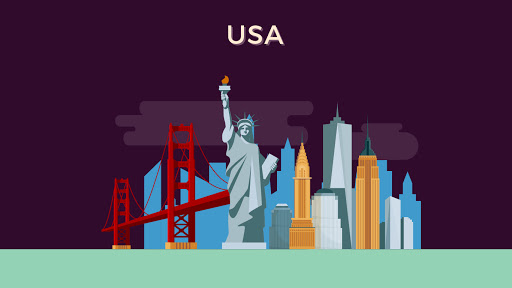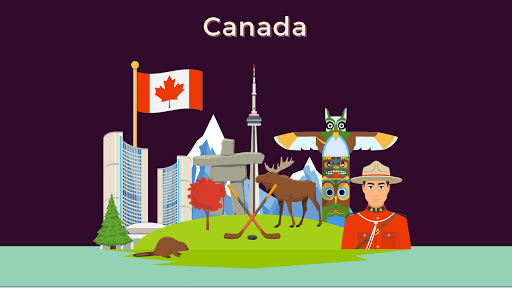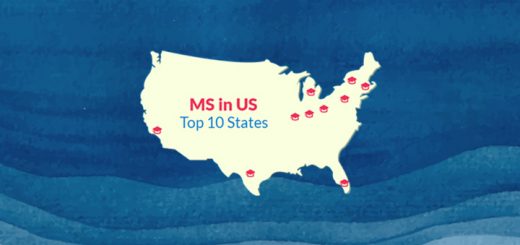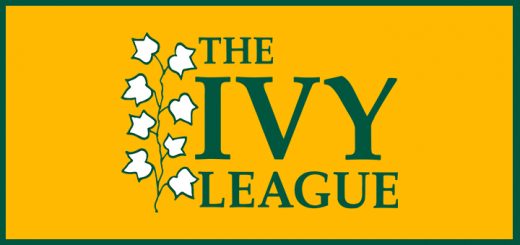Studying in Canada vs USA – Which is better?

The Ultimate Masters Checklist
Download the free eBook now!Over the last couple of decades, various countries have begun to stand out as “popular destinations” for post graduate studies aspirants. Among the countries that offer various post-graduate and doctoral programs for students across the globe, two countries have established their eminence. One of them is known for snow-capped mountains, its love for ice hockey and everybody’s favorite Prime Minister. The other is renowned for its booming job market, high standards of living, and its thriving multicultural atmosphere. We are, of course, talking about Canada and the USA. Two vastly different countries with several striking similarities; one of which is the primarily unsurpassable quality of secondary education.
Since the Internet boom in the late 1980s, the US has been the ultimate study abroad destination for aspiring students. A combination of factors like cutting-edge infrastructures, R&D opportunities, and better employability has firmly cemented the US’s position as the first choice for a vast number of students wishing for quality education. However, in recent times, Canada, US’s friendly neighbor, has emerged as a competition to the US as an excellent alternative, with high-quality education that doesn’t pinch your pockets. Also it’s important to note, Canada has not just improved its stature in terms of its MS, or more generally the post graduate studies, but also work related opportunities across the globe.
One must keep in mind, that course selection, is the first and foremost step in moving forward for studying in the US or Canada. Following that, preparing for your GRE/TOEFL is the most important step to take the first step towards a successful admit in these 2 countries.
So, here is the big question- should you apply to both the US and Canada for your postgraduate studies? Or should you simply stick to one?
This is a question that leaves many students scratching their heads, so let us try and get some clarity on it.
Why Canada or USA?


Now, here’s another question, what makes Canada or the USA stand out, out of all the study abroad destinations. Let us now understand it better, to make better choice of study destination. USA has long been the ideal, or rather, the ultimate study destination for predominantly MS and other master’s programs. Over the decades, it has established its own reputation as the global research hub. From the earliest stages of Silicon Valley, back in the 1970’s, through the “dot-com boom” in the 1990s and early 2000s, up to the Artificial Intelligence & Machine Learning trend in 2019, there has been innumerable technological advancements that have occurred in the USA. Lately, due to improvement in various facets, Canada has become a hot favorite among students, as their preferred destination for pursuing MS.
Let us get some more insights as to why are students preferring to study in Canada. The following reasons stand out
- Lower average tuition fees in comparison to US universities for international students. As on 2019-20 based on reports from Statistics Canada, the average tuition fees for international post grad students who wish to study in Canada, was approximately $17,714 CAD($13,437 USD). Whereas, based on the reports from College Board, USA, average tuition fees for 2019 was reported to be around $26,290 USD ($34,860 CAD).
“For Example: Tuition fees for Masters at the University of British Columbia,globally ranked 51 was noted to be approximately $8,777 CAD ”.
- Wide availability of discipline specific scholarships and co-op programs, or co-operative education which essentially allows the students to integrate their studies, by alternating one semester of studying abroad with one semester of work in a field related to their studies. University of Toronto, University of Waterloo are some of the universities to offer co-op programs.
- Comparatively easier to pursue part-time jobs in Canada, due to the flexibility of study permit.
- Ease of immigration to obtain Canadian citizenship. Students are also eligible to stay up to 180 days, after their Post-Graduation, to apply for a Canadian Work Permit.
- Excellent healthcare policy.
Despite these pros associated with studying in Canada prompting aspirants to study in Canada as opposed to the USA, there are a few key aspects that still make USA the number one preferred destination for pursuing studies abroad.
- Broad range of undergraduate and postgraduate study programs, with the following top trending specializations
- MS in Computer Science, with upcoming fields like Artificial Intelligence, Machine Learning, Deep Learning and so on.
- MS in Electrical and Electronics, with trending fields like Mechatronics, Embedded Systems and Robotics, which are also interdisciplinary master’s programs themselves.
- MS in Mechanical Engineering including upcoming fields like Nano Engineering, Marine Engineering, Acoustics, Bio-mechanical Engineering
- MS in Biology with specializations such as Biomedical computation, stem cell and regenerative biology and various other specializations
- Business Studies
There are various interdisciplinary programs such as Human Computer Interaction Program(Stanford University), Mathematical and Computational Science(Data Science Program by Stanford University) to name a few. Universities across the USA, have stood the test of time, and stand as a self-testament of their technological prowess and research capabilities. Based on a recent report by The Global Innovation Index, it is natural to claim that the US has underscored its research depths. The following facts substantiate the same
- The US has ranked
- Number 1 Public and Private R & D Expenditures, with over $510B being spent on research and development
- Number 3 in Global Innovative Index rating (2019)
- Approximately 18 billion in Global App Downloads produced by local companies (2018)
- Every year, universities across the USA are funded heavily for the purpose of research and development.
“Fun Fact: As on 2018,Johns Hopkins University spent a record $2.56 Billion and led the research spends amongst all US universities for the 39th consecutive year – National Science Funding Reports ”.
- Vast numbers of mid-level universities, providing aspirants with more opportunities to pursue their studies in USA.
- Huge career opportunities for fresh graduates, ranging from successful Silicon Valley startups to Fortune 500 companies
- A broad set of choices of Science, Technology, Engineering and Mathematics(STEM) degrees, with a vast set of sub-disciplines, ranging from Aerospace Engineering, Statistics, Psychology and many more are available for students who wish to study in the US, with most STEM options eligible for 17 to 24 months of OPT(Optional Practical Training)
- A report from Startup Outlook Survey, USA (Silicon Valley Bank), with over 1,300 respondents states that more and more research innovations are cropping up in the fields of AI, Big Data, Cyber Security and so on, and claim that, fundraising for startups has become easier in the last two years
Below is a small graph representing the number of universities in various rank slabs in case of both the US and Canada. This graph was based on parameters such as quality of education (awards won by alumni and faculty), quality of staff (the research prowess of the staff, across 20+ broad categories) with reference from Academic Ranking of World Universities (ARWU) reports.
These graphs indicate the vast degree of presence of US universities in the top ranks,would definitely help identifying the ocean of opportunities for the students who aspire to study in the US or Canada
See how to write the perfect SOP that wins you Top MS Admits!
What parameters should I consider?
Besides top-notch education and excellent faculty, there are several other parameters you should take into account while considering your postgraduate options. Remember: this is the place where you will spend two years of your life, so it is equally important to consider other factors such as the cost of living, public safety, employment opportunities, weather, student-friendliness etc.
Quality of Education
First and foremost, of course, is the quality of education offered by American and Canadian universities. This factor is paramount to your decision-making process- after all, it is a decision that will affect your life and career.
While it is true that the US has a monopoly in the education market, Canada is not lagging behind. With several top universities like the University of Toronto University of Toronto, McGill University and the University of British Columbia, Canada is slowly but surely catching up with the US. In terms of course structures, both the countries are very similar. Universities in both the US and Canada offer research-oriented (thesis-based) and course-oriented (non-thesis based) Masters programmes. Depending on your academic aspirations, you can choose either – normally, students wishing to embark on a Ph. D. opt for the research-oriented Masters. In both countries, students pursuing their MS are required to complete 36 credit hours in order to graduate.
In terms of the quality of education offered, there is little difference between the two. When we consider the PISA(Program for International Student Assessment) scores run by the OECD (Organisation for Economic Co-operation and Development), Canada is found to be ranked 10th, whereas the presence of the US is in the 40s. In the case of the USA, research has stood the test of time, students who prefer research and duly want to commit themselves to producing genuine scientific breakthroughs, prefer studying in the USA over Canada. With most US universities having a strong foundation in research, with alumni being laureates of prestigious awards like the Nobel, Fields Medal and so on, US can be claimed duly, as a haven for research aspirants, in terms of their education.
“Fun Fact: As on 2018-19 Massachusetts Institute of Technology is associated with 94 Nobel Laureates”
“Fun Fact #2: As on 2018-19 Canada has the highest proportion of Working Age Adults among OECD Countries, at a staggering 55%”
Education in Canada is much cheaper than in the US, thanks to several laws and policies put in place to make education affordable and accessible to all. Private universities in both the US and Canada are generally more expensive since they are not regulated by the government. However, state universities in both countries are much more affordable – exact fees differ from school to school.
“Fun Fact #3: Canada is the highest educated country across the globe”
As on 2018-19, based on reports from Bureau of Labour Services, USA and Statistics Canada (Stats Can), the national statistical agency of Canada, let us take a look at the trending courses in the USA and Canada, with their average salaries
Table 1: Courses and Average Salaries- Source: BLS, Atlantic Canada Engineering Salary Survey and Stats Can Reports
| USA | USA | Canada | Canada |
| Course | Average Annual Salary | Course | Average Annual Salary |
| Computer Hardware Engineering | 117,840 USD/Year | Electrical/Electronics Engineering | 104,162 CAD/Year |
| Software Development | 114,000 USD/Year | Civil Engineering | 95,825 CAD/Year |
| Chemical Engineering | 114,470 USD/Year | Petroleum Engineering | 130,520 CAD/Year |
| Materials Science & Engineering | 96,930 USD/Year | Industrial Engineering | 93,045 CAD/Year |
| Geological & Mining Engineering | 98,420 USD/Year | Mechanical Engineering | 99,470 CAD/Year |
| Electrical Engineering | 101,620 USD/Year | Mining and Metallurgical Engineering | 95,292 CAD/Year |
| BioMedical Engineering | 95,090 USD/Year | Geoscientists & Oceanographers | 115,440 CAD/Year |
| Mechanical Engineering | 92,800 USD/Year | Chemical Engineering | 112,736 CAD/Year |
Students also have a potential option to switch from the masters(graduate program) that they have chosen, while studying abroad in the USA or Canada. Generally, the students would be required to have been actively studying in the designated university.
The process is relatively simpler in Canada. While Canada does not require a change in study permit, for switching courses; the student needs to update the course details in Immigration, Refugees and Citizenship Canada (IRCC).
On the other hand, switching masters programs in the USA is a bit more complex. One has to submit a new application, letters of reference reinforcing the ability of the student to perform well in the concerned program and then wait for the decision to be accepted by the program.
In any case, the student definitely needs to understand, that the whole process of switching or changing courses is not to be done quickly or abruptly. It is advised that the student keeps in mind the following questions and answers them by means of thorough research and guidance from admissions counselors.
- As a student, why do you want to pursue that course?
- Have you duly done adequate research to understand all the nuances of the course?
- Have you compared and considered all opportunities in your present course and the other course?
- Is the choice of your course based on your interest? Have you developed the interest on the basis of doing projects and research work in the concerned field of interest?
Tuition and scholarships
Owing to a burgeoning number of international applicants, several universities in the US and Canada offer generous scholarships and grants to considerably reduce the financial burden on the students: these scholarships range from partial fee-waiver to full rider. In some universities where the focus is on a particular discipline, students who are applying to study that discipline are given scholarships.
For instance, in the University of Ottawa, researchers are working to create the world’s largest centre for the study of photonics and optics, for which the University receives a huge amount of funding from alumni and philanthropists. Therefore, students who wish to study photonics are given full fee-waivers and living allowances in order to make scientific advancements in the field. Such discipline-specific scholarships are more widely available in Canada than in the US.
Similarly, in the University of California, Berkely, which has a well established history of research, and associated with 8 Nobel Laureates, we see the Berkeley Energy and Climate Institute, which receives over $730 million for its research expenses from the Government and various philanthropists. This center was recently noted for its project “TomKat UC Carbon Neutrality Project – involving Decarbonisation”. In this center, students are provided with various awards and fellowships; notable being the BECI Philomantha Fellowship, which includes a 2 year appointment, and also a $25,000 Research Fund, to pursue their research in disciplines related to energy and climate. They also confer the prestigious Art Rosenfeld Award for Energy Efficiency Application Materials.
As much as there has been an increase in the tuition fees, owing to the increase in prioritizing internationalization, there has been an increase in the number of scholarships offered to students who aspire to study in the US or Canada. Some of these scholarships are funded by the government, whereas the others are privately funded. The scholarships are categorized broadly under three categories
- Government Funded
- Non-Governmental Scholarships
- University-Specific Scholarships
Let us now get an overview of a selection of scholarships offered for international students in the USA and Canada.
Table 2: Scholarships – Source: QS Reports
| Scholarship | Category | Country | Eligibility |
| Fulbright Foreign Student Program | Government Funded | USA | Open to International Students in all fields of study except medicine |
| IDRC Research Awards | Government Funded | Canada | Students from developing countries who aspire for masters or doctoral level research |
| Vanier Canada Graduate Scholarships Program | Government Funded | Canada | International students who aspire to pursue doctoral studies in Canada |
| #YouAreWelcomeHere Scholarship | Non – Governmental | USA | International students of any overseas country |
| East-West Center Scholarships and Fellowships | Non – Governmental | USA | International students from Asia – Pacific Region |
| AAUW International Fellowships | Non – Governmental | USA | Female International Students |
| Surfshark Privacy and Security Scholarship | Non – Governmental | Canada | Students of all nationalities |
| Anne Vallee Ecological Fund | Non – Governmental | Canada | International students undertaking doctoral level animal research in Quebec or British Columbia |
Top 10 Universities in the USA and Canada – World Ranking
Based on annual reports published by Quacquarelli Symonds, the following universities make it into the Top 10 Universities in the USA and Canada, respectively. The QS rankings guides a student who aspires to study in the US , Canada or any overseas country, towards universities which are highly accredited by employers, academics and helps identify the right platform for a great career. The table below considers the following parameters, with weightage considered for each parameter, while ranking the Universities for 2020
- Academic Reputation – 40%
- Employer Reputation – 10%
- Citations per Faculty – 20%
- Student – Faculty Ratio – 20%
- Presence of International Faculties – 5%
- Presence of International Students – 5%
Table 3: University Ranking – Source: QS World University Ranking
| USA | USA | Canada | Canada |
| World Ranking | University Name | World Ranking | University Name |
| 1 | Massachusetts Institute of Technology | 29 | University of Toronto |
| 2 | Stanford University | 35 | McGill University |
| 3 | Harvard University | 51 | University of British Columbia |
| 5 | California Institute of Technology (Caltech) | 113 | University of Alberta |
| 10 | University of Chicago | 137 | Université de Montréal |
| 13 | Princeton University | 140 | McMaster University |
| 14 | Cornell University | 173 | University of Waterloo |
| 15 | University of Pennsylvania | 211 | The University of Western Ontario |
| 17 | Yale University | 233 | University of Calgary |
| 18 | Columbia University | 239 | Queens University at Kingston |
Student Profiles
Keeping in mind the above university rankings and other parameters that were discussed, let’s look at a few students who got admitted into top-universities.
| Candidate | Paul Samuel | Alankit Chaturvedi | Akshay |
| Backlogs | 4 | 2 | 0 |
| CGPA/Percentage | 8.26 | 79.76% | 77.40% |
| College | IIT, Bombay | PES University, Bangalore | Delhi Technological University |
| GRE | 314 | 304 | 334 |
| TOEFL | 108 | 106 | 117 |
| Admit | University of Delaware | Arizona State University | Purdue University |
Social Welfare
The taxes you pay in Canada are considerably higher compared to the US, but your tax money is judiciously spent by the government to ensure your social welfare.
For instance, one of Canada’s biggest assets is its universal healthcare schemes, which makes high quality healthcare extremely affordable to all its citizens.
Additionally, when you file your tax returns on time, a portion of your taxes is refunded to you. Social welfare in the US peaked under the Obama administration, with the advent of Obamacare.
Visa Process
Let us try to get a better insight on the Visa Process for applying to study in the USA and Canada.
A student can study for a maximum period of 6 months without any study permit or visa, in Canada. For study duration beyond 6 months, a Canadian Study Permit is required. The required documents for the Canadian Study Permit are:
- Letter of Acceptance from the University that the student has applied
- Certificate of Acceptance from the Government, if the student is applying for Québec
- Canadian Student Visa Application Package from the Citizenship and Immigration Canada website/Local Office or Canadian Embassy in the respective home country.
For studying in the USA, a US Student Visa, is a prerequisite. For this , a student must follow the following procedure
- Get accepted by a Student and Exchange Visitor Program (SEVP) approved US University, before 6 to 12 months of commencing your studies, and pay the SEVP fees.
- Complete the US Student Visa Application, with recent photographs and pay the application fees
- Schedule and attend the visa interview in the designated centers
The ultimate guide on How to Evaluate your Profile for Masters – Download Now
Lifestyle and Expenses
The biggest deterrent to students wishing to apply to Canada is the weather. Temperatures can dip as low as -25°C in winters with heavy snowfall and storms forcing you to stay indoors for days on end. By comparison, the US offers more variety- states like California and Florida are perennially warm and dry, with the occasional spell of rain.
The US also boasts of a large Indian diaspora, which is often an important factor for many Indian students who start to feel homesick in a few months. The Indian community in Canada is comparatively smaller, but not non-existent.
When it comes to living expenses like rent and utilities, Canada is leaps and bounds ahead, with lower rents and transportation costs. Cities like Toronto and Montreal are extremely student-friendly, with student discounts available almost everywhere- from restaurants to clothing stores and movie theatres. Additionally, Canada is much safer, and has lower crime rates and stringent gun laws.
Did you know that according to the figures from the University of Alberta, the average living costs for an international student is $16,800 (Canadian Dollars) for an entire year?
Post Study Work Permit
One key reason for aspirants to study abroad, is job opportunities. Let’s look at the work permit options available in the USA.
The immigration process of the USA is pretty rigid, and thus it is imperative for a student to look at the options available. Some of the common post study visa options are shared next
- F1 Visa – Allows a student to stay up to 12 months post completion of his/her studies in the USA for the purpose of practical training.
- M1 Visa – Valid for a year, the student can work in the US up to 6 months after his/her studies is completed, for the purpose of practical training. This visa is extendable up to 3 years.
- J1 Visa – International students who are participating in educational or cultural exchange programs, under which they are eligible to teach, study, conduct research and also work as trainees, or carry out their internships. For a student to get the J1 Visa, he/she must have sponsorship from a J1 Host and J1 Sponsor
To work in Canada, a student must apply for a Post-Graduation Work Permit within 180 days of the University issuing his/her final marks. This allows the student to work in Canada up to a period of 3 years.
Jobs and Career Opportunities
Of course, the US has a massive job market, but in recent years, recession and unemployment rates have soared, making it difficult to secure a job. Canada too has faced these problems, but on a relatively smaller scale.
The biggest difference between Canada and the US in terms of employment is that it is much easier to pursue part-time jobs in Canada. In the US, if you wish to work while studying, you will have to obtain an OPT (Optional Practical Training), but the job you undertake must be related to your field. In Canada, however, you are allowed to undertake almost any job, since your study permit doubles up as a work permit too. Also, it is important to note, that
After graduating, the average salary for an MS student in the US is about USD 69,000 (Rs 49 lakhs approx.) per annum, while in Canada it is lower at CAD 70,000 (Rs 35 lakhs approx.) per annum. Vast scope for research, huge opportunities to study in interdisciplinary fields, excellent work opportunities combined with building a strong network, with connections ranging from fellow students, to employees of upcoming startups and well-recognized professors and academicians makes the US a lucrative country for postgraduate studies.
Despite the lack of proper job security at fresher level in the US, the graduate employability scores provided by Quacquarelli Symonds, as a part of their annual reports, gives the USA the edge in better job opportunities, and graduate employability as opposed to Canada. The following parameters are considered in terms of graduate employability
- Graduate Employment Rate
- Association and Partnership with Employers
- Connection between employers and students
- Reputation of the employer
- Alumni Outcomes
Let us look at the top 10 universities of both, the US and Canada in terms of Graduate employability rankings predicted for 2020.
Table 4: Graduate Employability Rankings – Source: QS Reports
| USA | USA | Canada | Canada |
| Ranking | University Name | Ranking | University Name |
| 1 | Massachusetts Institute of Technology | 16 | University of Toronto |
| 2 | Stanford University | 25 | University of Waterloo |
| 3 | University of California, Los Angeles | 87 | University of Alberta |
| 5 | Harvard University | 98 | McMaster University |
| 11 | New York University (NYU) | 101-110 | Queens University at Kingston |
| 12 | Cornell University | 121-130 | The University of Western Ontario |
| 13 | Yale University | 131-140 | University of Calgary |
| 14 | University of Chicago | 171-189 | Université de Montréal |
| 15 | Princeton University | 251-300 | University of Victoria (UVIC) |
| 20 | University of Pennsylvania | 301-500 | Carleton University |
Considering these rankings, and the parameters used to ascertain the rankings, it is safe to say, the US is at a much better position in terms of graduate employability. Thus, aspirants who wish to study in Canada, or study in the US, could get a better view on career opportunities in both graduate schools and post graduate programs.
In sum, we highly recommend that you apply to a combination of both American and Canadian universities in order to maximize your chances of admissions. Barring a few minor differences, both countries are almost the same in the educational sphere. The US and Canada are leaders in providing high-quality education and job opportunities and thus make for an excellent study abroad destination.
Like the old adage that says, “Don’t put all your eggs in one basket”
Similarly, it is smart as well as practical to not bank your MS dreams on one university or one destination alone. Increase your chances of an admit by exploring cost-effective options worldwide.
Hope this blog has made an attempt to cover most of the queries that the audience had!
Please drop your comments below.










1 Response
[…] View complete answer […]